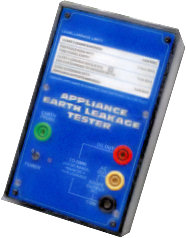May 2016
This month’s highlights
2-Channel Balanced Input Attenuator for Audio Analysers and Digital ‘Scopes
This project extends the measurement capabilities of low-cost USB test instruments such as digital storage oscilloscopes or audio analysers. Our 2-channel balanced input attenuator has low noise and distortion and is suitable for extending the measurement range of self-contained and USB-linked equipment.
It provides balanced/ differential inputs for each channel in addition to to unbalanced inputs, combined with three attenuation/ measurement ranges – 1:1, 10:1 and 100:1, giving your test equipment much more flexibility and the ability to handle higher input voltages.
![]() Surface mount design needs good soldering skills
Surface mount design needs good soldering skills
Appliance Earth Leakage Tester
In April 2016’s issue we presented an Appliance Insulation Tester which tests for insulation breakdown at 500V or 250V DC. However it cannot do a proper test of any appliance (a large screen TV, for example) that is switched on by remote control or does not use a mechanical on/off switch.
This month’s issue presents an Appliance Earth Leakage Tester that does a more thorough job of testing the electrical integrity of such equipment. It applies 230V AC mains to the apparatus and uses a current transformer to detect any imbalance between live and neutral current flow, and displays measurements on a DVM. Battery powered, discrete circuit board design.
4-Output Universal Voltage Regulator
This is our most flexible linear regulator board yet. It has provision for four outputs: adjustable positive and negative outputs and two fixed outputs of 5V and 3.3V. It can be fed from an AC mains adaptor, small transformer or DC supply with balanced outputs. Typical 200mA continuous current rating.
It’s a versatile and adaptable little project that will meet many constructor’s project power supply requirements. Details of all variants are clearly shown in full colour for ease of assembly.

Part 4 – Measuring temperature
This month’s Arduino primer investigates ways in which the Arduino can be sense and act upon what’s going on in the real world. Our Arduino workshop looks at the Arduino’s analogue ports, introducing some low-cost temperature sensors. Our Coding Quickstart feature explains the functions that will let you use serial communication via the Arduino USB port. Lastly we build a simple thermostatic controller using an LM35 with the Arduino Uno.
PIC n MIX
Choosing and using accelerometers – Part 2
Our PIC expert Mike O’Keefe suggests an electronic spirit level using the x-axis output of a modern accelerometer with an LPLC PIC development board.
Also in this month’s issue:
- Techno Talk – a wry insight into the evolution of the jack plug, which term (possibly) dates back to 1643!
- Practically Speaking – a practical view of the terminology of toggle and rotary switches, and how to use them
- Net Work – how Facebook’s data centre in Luleå, Sweden uses free-cooling air; vulnerabilities in the latest motor vehicle network technologies
- Circuit Surgery – a mammoth-size investigation into oversampling with ADCs.
- Max’s Cool Beans – revisiting the use of tri-colour LEDs in a ‘ring’ formation
- Electronic Building Blocks – a low cost offering of a variable PWM power module
Next month
Audio Signal Injector & Tracer; Infrasound Snooper; Champion Pre-amp; Teach-In 2016 (Part 5): Arduino and the 1-wire bus system.

Printed Circuit Boards
We supply PCBs for all our projects going back to 2013.
New PE service – Programmed PICs
Buy programmed PICs for most of our projects.







